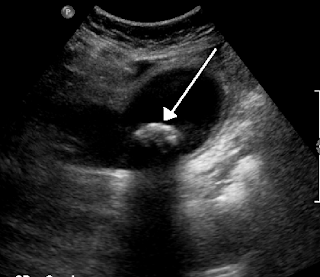- Craving fatty/fried food
- Not feeling fully satisfied after eating
- Immense sugar cravings
- Itchy skin and dry eyes
- Hives, sneezing
- Bloating, indigestion, burping, belching, flatulence
While many people may have gallstones and be asymptomatic, typical signs, symptoms and clinical presentations of acute symptomatic cholelithiasis are:
- Pain in upper abdomen, sometimes radiating to just below the right axilla
- Frequent"attacks" or sudden sharp pain after eating a fatty meal that may last moments to several hours
- Intermittent pain on the right, below the ribcage
- Bloating
- Nausea
- Vomiting
- Belching
- Gas
- Indigestion
- Sweating, chills, low grade fever
- Jaundice
- Clay-colored stools
Typical signs and symptoms of Bouveret Syndrome are:
- Nausea
- Uncontrollable vomiting and/or hematemesis
- Upper abdominal pain and distention
- Dehydration
- Fever
- Weight loss
- Melena (tarry, black, blood filled stools)
"Bouveret Syndrome." Cinahl Information
Systems, Glendale, CA, 5 Dec. 2014. Web. 13 Oct. 2015.
Gallstones (Cholelithiasis). (2015, January 20).
Retrieved October 13, 2015.
Savitsky,
D. (14). Gallstones (M. Chwistek, Ed.). 20070420. Retrieved
September 9, 15, from Nursing Reference Center.
Tweed,
V. (n.d.). Gallstones: HEALING FOODS & REMEDIES. Better Nutrition.
Retrieved September 9, 15 from Nursing Reference Center.

